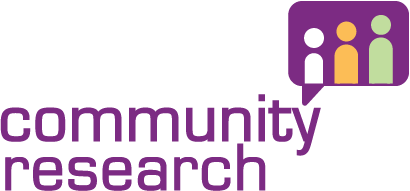Engaging with Transgender people
By Lucy Lea
In the second of our articles on involving people from ‘seldom-heard’ communities in research, we take a look at how to engage with transgender people.
In recent years, trans issues have gained growing prominence and visibility. The Equality Act of 2010 brought in specific protection on the basis of ‘gender reassignment’. We’re in a very different place than we were 10 years ago, but knowledge and acceptance still have a long way to go. Trans people are some of the most marginalised in our society, and they face some of the highest levels of hate crime, discrimination, social isolation, poor mental health and suicide.
Small group, big impact
While this is a small group of the population (an estimated 1% of the population experiences ‘gender dysphoria’*), the action of individuals and organisations can have a disproportionately large impact on trans people if they fail to recognise and accommodate their needs. In addition, making changes to accommodate the needs of trans people can have a big impact on an organisation, particularly organisations who are ill-prepared.
Why specifically include transgender people in research?
There are a number of reasons why organisations might want to include transgender people in their research. They may be providing services where transgender people are likely to have quite different needs and experiences, such as healthcare, education, housing, retail and leisure. They may want to understand the needs and experiences of (potential) transgender staff.
Alternatively, organisations may wish to include transgender people in research in the spirit of inclusion! After all, we’re all people worthy of expressing our opinion and with valuable contributions to make.
So, here are our top tips for including trans people in research…
1. Mind your language
‘Trans’ or ‘transgender’ are mostly accepted umbrella terms that cover the wide and highly varied group of people whose gender expression falls outside typical gender norms. However, there are myriad terms out there describing different gender identities (e.g. intersex, non-binary, gender fluid, gender queer, gender non-conforming…). There are also many words and terms which are considered insulting, old-fashioned or not appropriate, including ‘transsexual’ and ‘sex change’.
Pronouns (him, her, they, Mr, Mrs, Mx etc.) are also important. In research we carried out in Nottingham, round-table introductions included name, how participants identified in terms of gender, and their preferred pronouns. Remember that non-binary people may want to be referred to as ‘they/ them’. This takes practice – gender is so entrenched in our daily language habits, that it can be hard not to use a gendered pronoun (‘him’/’her’) by mistake.
This is a fluid and changing language, and it is wise (and respectful) to know some of the terms before working with transgender people. GIRES has many excellent resources on their website, including on terminology.
2. Adopt a ‘learning’ approach
This is a complex and sensitive area, and one which is changing all the time. The experiences, needs and views of trans people can be hugely varied – there is no single ‘community’ or voice of trans people. No-one can be expected to ‘know it all’. Instead, it is useful to establish at the start that you are learning, you aim to be as inclusive and respectful as possible, and expect and invite people to correct you if you get it ‘wrong’.
3. Make survey questions inclusive
We could write a whole other article on this one…! There is much debate out there over the best way to make gender questions in surveys inclusive. The traditional ‘binary’ question (i.e. offering only ‘male’/ ‘female’ as options) risks making some people feel excluded. In their article on this topic, Sam Killerman suggests starting with asking whether you actually need to ask the question. If you do, consider including ‘non-binary’ and ‘prefer not to say’ options too.
4. Pay attention to logistics
There are extra considerations in where and how you hold research sessions when you are involving trans people. Personal safety is paramount: sadly, trans people are at greater risk of abuse and violence, and so choosing a venue that is in a safe area, is well-lit and known to participants is helpful. In addition, not all trans people are ‘out’ to people they know, so anonymity is more important than ever in work with trans people.
5. Recruitment
Needless to say, you are unlikely to find many trans people through traditional recruitment methods. We tend to go via trans support groups and charities (www.tranzwiki.net has a list, which is not comprehensive, but is a good start).
In our experience, once you have the trust of a group of trans people and they know you genuinely care about representing their voices, you’ll be amazed at how welcoming, honest and open conversations are (albeit frequently peppered with a liberal sprinkle of dark humour!)
* GIRES, The Number of Gender Variant People in the UK - Update 2011

